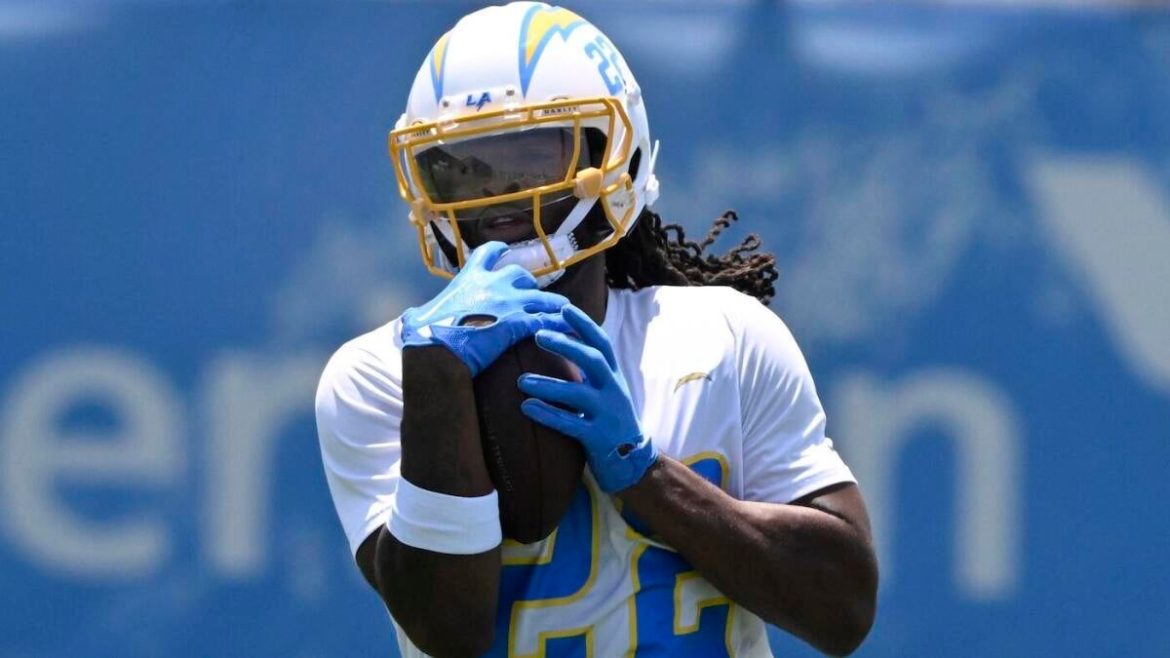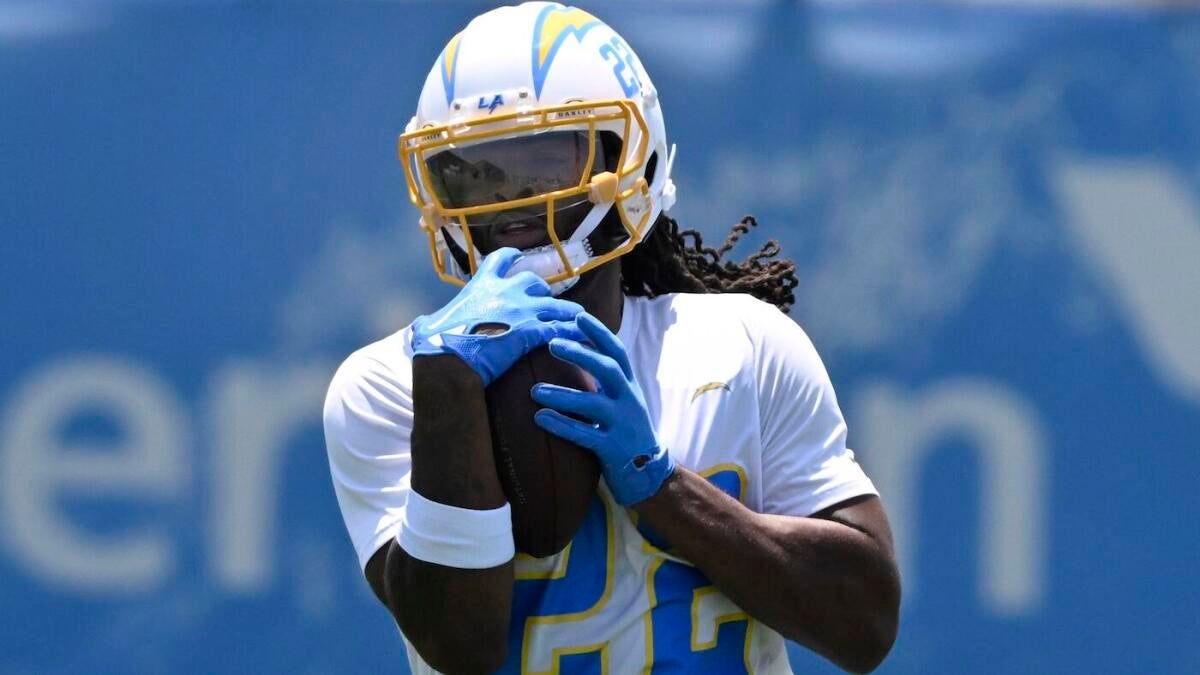The Fourth of July is a time of celebration, marked by vibrant displays of fireworks that light up the night sky. However, for Los Angeles Chargers running back Najee Harris, this year’s festivities took an unexpected turn when a pyrotechnic mishap resulted in a superficial eye injury. While the incident initially sparked concern among fans and analysts, subsequent reassurances have tempered the panic, allowing the focus to shift toward Harris’s recovery and the Chargers’ strategic plans for the upcoming NFL season. This event, though seemingly minor, offers a compelling lens through which to examine the fragility of an athlete’s career, the power of public perception, and the Chargers’ calculated investment in Harris.
The Initial Flare-Up: Panic and Uncertainty
When news of Harris’s injury broke, it spread rapidly across social media platforms, fueled by speculation and sensationalized reports. The initial lack of concrete details allowed rumors to flourish, with some suggesting minor discomfort while others speculated about more severe damage, including potential vision loss. This wave of uncertainty underscores the volatile nature of information dissemination in the digital age, where unverified claims can quickly escalate into widespread anxiety. The Chargers’ fanbase, already invested in the team’s offseason moves, was particularly sensitive to the potential impact of Harris’s injury on the upcoming season.
The immediate concern centered on Harris’s health and his availability for the season. An eye injury, even if superficial, can affect depth perception, reaction time, and overall performance—critical factors for a running back. Harris, who was acquired by the Chargers to bolster their running game, is a key component of their offensive strategy. His potential absence would have significant implications for the team’s prospects, making the initial panic understandable.
Cooling Embers: Confirmation and Reassurance
The panic was quickly quelled by a statement from Harris’s agent, Doug Hendrickson, who clarified that the injury was “superficial” and that Harris is “fully expected to be ready for the upcoming NFL season.” This announcement provided much-needed reassurance, allowing fans and analysts to breathe a sigh of relief. The term “superficial” is crucial here, as it indicates that the damage is limited to the surface of the eye and unlikely to cause long-term impairment. This distinction is vital, as it separates the incident from potentially career-threatening scenarios.
However, lingering questions remain. What exactly constitutes a “superficial” injury in this context? What kind of treatment will Harris require, and how will this incident affect his preparation for the season? These are the questions that will be closely monitored in the coming weeks. The Chargers’ medical staff will likely conduct thorough evaluations to ensure Harris’s full recovery, while the team’s coaching staff will need to adjust training plans accordingly.
The Chargers’ Investment: A Calculated Risk
The Chargers’ decision to acquire Najee Harris in the offseason was a strategic move aimed at strengthening their running game. After parting ways with Austin Ekeler, the team identified Harris as a potential workhorse back capable of carrying the load. Harris, known for his physicality, versatility, and pass-catching ability, was seen as a perfect fit for the Chargers’ offensive scheme. His experience with the Pittsburgh Steelers, where he was a reliable contributor, further bolstered the team’s confidence in his abilities.
However, the decision to bring in Harris was not without its critics. Some questioned whether he was worth the investment, given his previous performance and the availability of other running back options. Others pointed to the fact that Harris has accumulated a significant number of carries for a player entering his fourth year in the league, raising concerns about his long-term durability. The Chargers, however, clearly saw something in Harris that convinced them he could be a valuable asset.
The fireworks incident, though minor, adds another layer of complexity to this calculated risk. While Harris is expected to recover fully, the incident serves as a stark reminder of the unpredictable nature of the game and the potential for unforeseen setbacks. The Chargers’ success this season hinges, in part, on Harris’s ability to stay healthy and perform at a high level. This incident underscores the fragility of that equation and the need for the team to remain vigilant in managing his health and performance.
Beyond the Injury: A Moment of Reflection
The Najee Harris fireworks incident extends beyond the realm of sports news, touching upon themes of personal responsibility, risk management, and the challenges faced by professional athletes. For Harris, the incident serves as a cautionary tale about the importance of safety and awareness, especially in potentially hazardous situations. Fireworks, while visually stunning, are inherently dangerous and require careful handling and adherence to safety guidelines. This incident highlights the need for athletes, who are often in the public eye, to be mindful of their actions and the potential consequences.
More broadly, the incident raises questions about the pressures and expectations placed upon professional athletes. They are not only expected to perform at an elite level but also to serve as role models and ambassadors for their teams and communities. This dual responsibility can be challenging to navigate, particularly in an era of constant scrutiny and instant judgment. The incident serves as a reminder that athletes, like anyone else, are human and susceptible to accidents and setbacks.
The Road Ahead: Optimism and Vigilance
As the dust settles on the fireworks incident, the focus now shifts to Harris’s recovery and preparation for the upcoming season. The prevailing sentiment is one of cautious optimism, fueled by the assurances that his injury is superficial and that he is expected to be ready for training camp. However, it is crucial for the Chargers to remain vigilant and provide Harris with the necessary support and resources to ensure a full and complete recovery. This includes thorough medical evaluations, appropriate treatment, and a gradual return to training.
The team must also be prepared to adjust its offensive game plan if Harris experiences any lingering effects from the injury. This could involve redistributing carries among other running backs or incorporating more pass-heavy plays to accommodate Harris’s recovery. The Chargers’ coaching staff will need to be flexible and adaptable, ensuring that the team’s offensive strategy remains effective regardless of Harris’s status.
Ultimately, the success of the Chargers’ season will depend on a variety of factors, including the health and performance of its key players. The Najee Harris fireworks incident serves as a reminder that even the most carefully laid plans can be disrupted by unforeseen events. By remaining adaptable, proactive, and supportive, the Chargers can navigate these challenges and strive to achieve their goals.
A Season of Hope, Not Smoke
The fireworks incident involving Najee Harris was undoubtedly a scare for Chargers fans. However, with the reassurance that the injury is minor and that Harris is expected to be ready for the season, the incident should be viewed as a spark, not a flameout. The Chargers have invested heavily in Harris, and his success is crucial to their offensive aspirations. While vigilance and caution are necessary, the focus should now be on supporting Harris’s recovery and preparing for a season filled with hope, not shrouded in smoke. The Chargers faithful will be eager to see Harris burst onto the scene, leaving the fireworks incident firmly in the rearview mirror. As the team gears up for the upcoming season, the incident serves as a reminder of the resilience and adaptability required in the world of professional sports.





